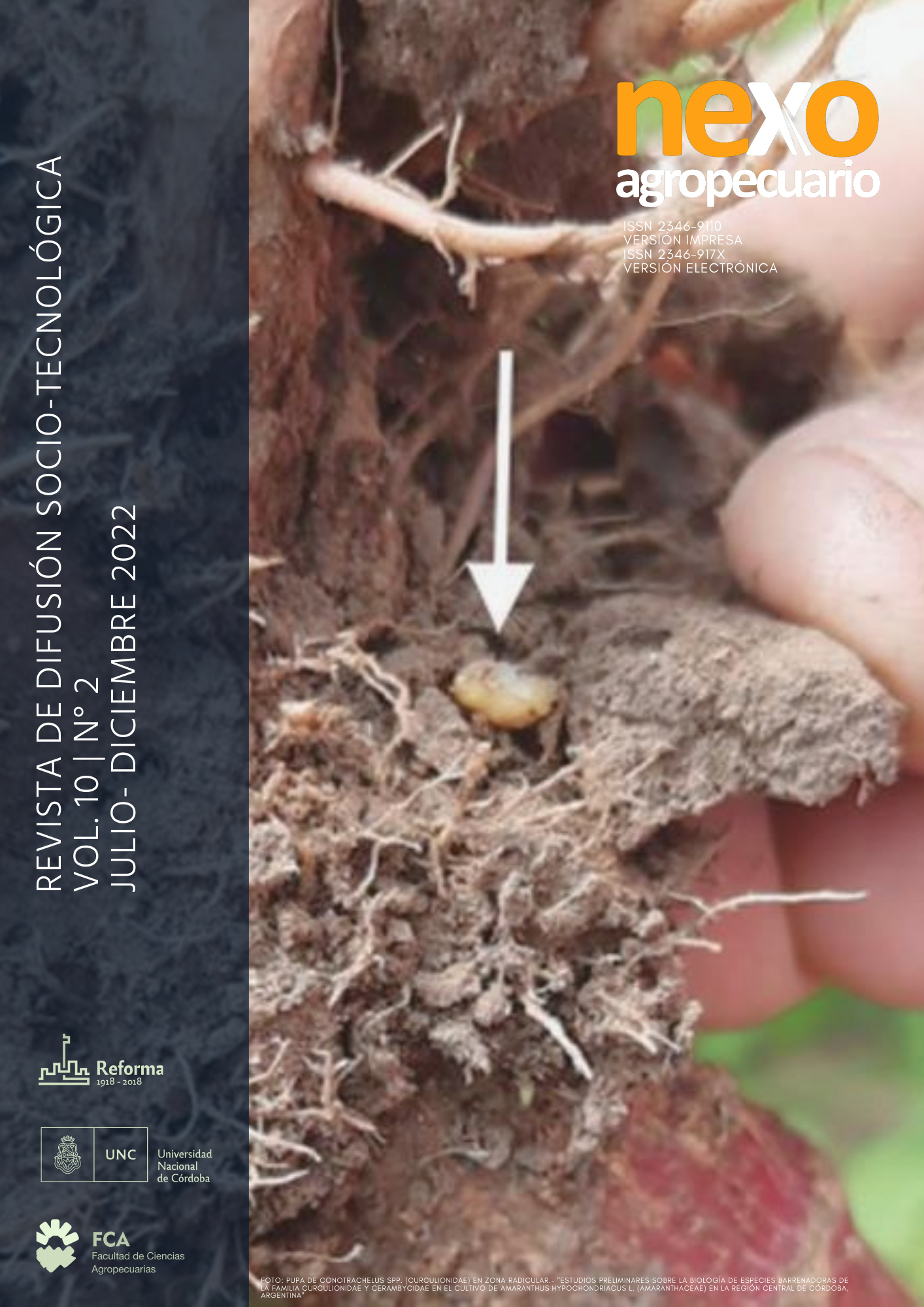SOILLESS CULTIVATION PRACTICES IN AQUAPONIC SYSTEM. SETTING UP A MODULE IN CAMPO ESCUELA-FCA
Keywords:
Experimental system, Soilless farming system, Leafy cropsAbstract
En este trabajo se presentan avances de los resultados de una práctica de un sistema experimental de acuaponia instalado en el Campo Escuela de la Facultad de Ciencias Agropecuarias, analizando un ciclo de cultivo de lechuga (Lactuca sativa var. colada). En un tanque de 1000 litros de capacidad, se mantienen 40 carpas húngaras (cyprinus carpio), mientras que 45 plantines de lechuga se transplantan en tubos de pvc. Las plantas se abastecen con agua proveniente del tanque de las carpas, con un sistema de recirculación de agua. Se evalúa la evolución del cultivo de plantas a lo largo de un ciclo de 40 días mediante el crecimiento y la ganancia en peso y se registra la biometría correspondiente de peces. El contar con los parámetros adecuados para lograr una estabilización del sistema permite trabajar con otros cultivos de hojas que se adapten a sistemas de cultivo sin suelo.
References
Baganz, G. F., Junge, R., Portella, M. C., Goddek, S., Keesman, K. J., Baganz, D., Kloas, W. 2022. The aquaponic principle—It is all about coupling. Reviews in Aquaculture 14(1): 252-264
Diver S. 2006. Appropiate technology transfer for rural areas. Fayetteville AR North Carolina, USA 1-28 pp
Graber A., Junge R. (2009) Aquaponic systems: nutrient recycling from fish wastewater by vegetable production. Desalination 246: 147-156
Love D.C., Uhl M.S., Genello L. 2015. Energy and water use of a small-scale raft aquaponics system in Baltimore, Maryland, United States. Aquac Eng 68:19–27
Lu J., Li X. 2006. Review of Rice-Fish-Farming Systems in China—One of the Globally Important Ingenious Agricultural Heritage Systems (GIAHS). Aquaculture 260(1):106–113
Palm H.W. Knaus, U., Appelbaum, S. 2018. Towards commercial aquaponics: a review of systems, designs, scales and nomenclature. Aquaculture International 26(3) 813-842
Roosta R. H., Mohsenian Y. 2012. Effects of foliar spray of different Fe sources on pepper (Capsicum annum L.) plants in aquaponic system. Scientia Horticulturae 146:182-191
Savidov N. 2004. Evaluation and development of acuaponics production and product market capabilities in Alberta. Brooks AB Crop Diversification Centre South, Canada 67 pág.
Schneider O., Sereti, V., Eding, E.H., Verreth, J.A.J. 2005. Analysis of nutrient flows in integrated intensive aquaculture systems. Aquacultural Engineering 32: 379-401
Schneider, O.; Sereti, V.; Eding, E. H. and Verreth, J. A. J. 2005. Analysis of nutrient flows in integrated intensive aquaculture systems. Aquac. Engin. 32:379-401.
Vermeulen T., Kamstra A. 2012. In: International Symposium on Soilless Cultivation 1004: 71–77
Villalobos-Reyes S., González-Pérez E. 2016. Determinación de la relación pez planta en la producción de tomate (Licopersicum sculentum L.) en sistema de acuaponía. Revista Mexicana de Ciencias Agrícolas 17(5): 983-992
Villarroel M., Alvariño J.M.R., Duran J.M. 2011. Aquaponics: integrating fish feeding rates and ion waste production for strawberry aquaponics. Spanish Journal of Agricultural Research 9(2):537–545
Yep, B., Zheng, Y. 2019. Aquaponic trends and challenges–A review. Journal of Cleaner Production 228: 1586-1599
Downloads
Published
Issue
Section
License
Copyright (c) 2022 L. Fontanini, C. Kubach, María Cecilia Valentinuzzi

This work is licensed under a Creative Commons Attribution-NonCommercial-ShareAlike 4.0 International License.
Attribution - Non-Commercial - Share Alike (by-nc-sa): No commercial use of the original work or any derivative works is permitted, distribution of which must be under a license equal to that governing the original work.


